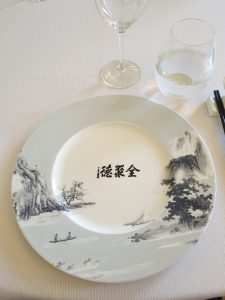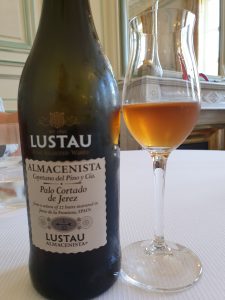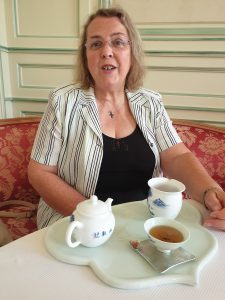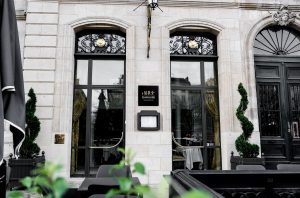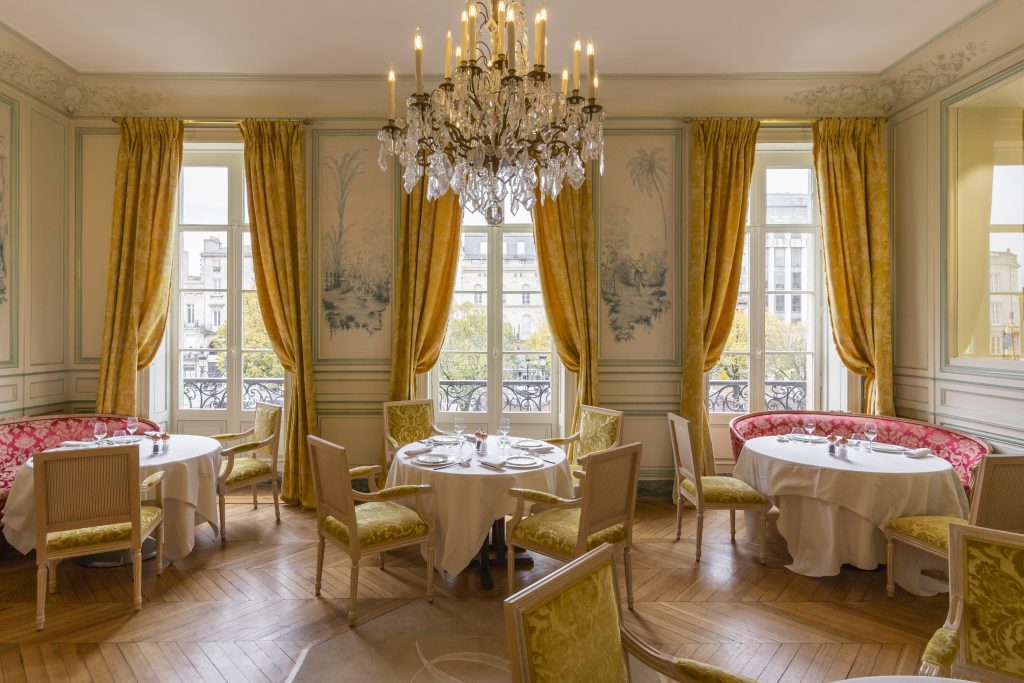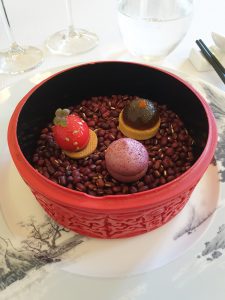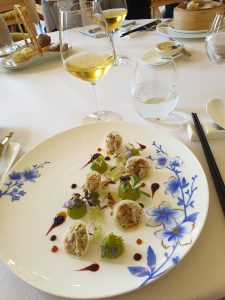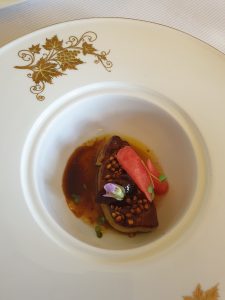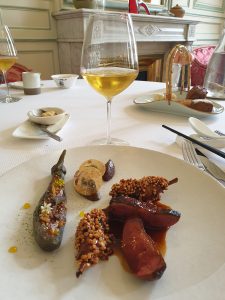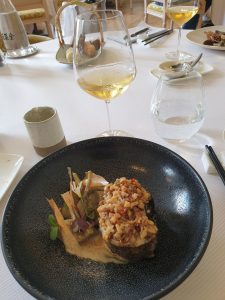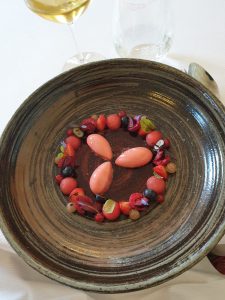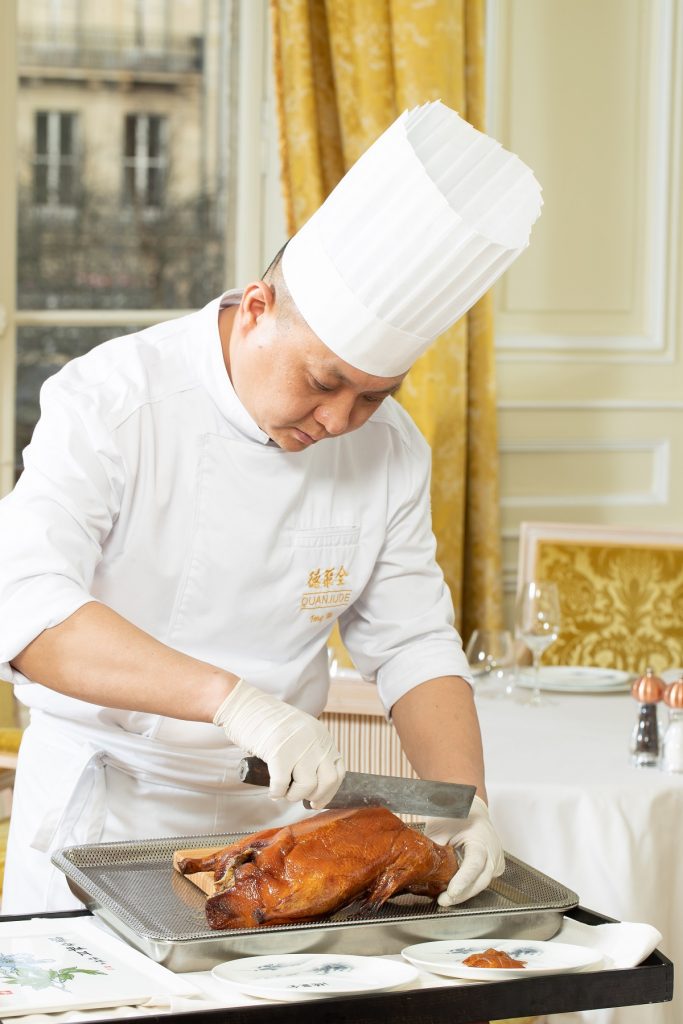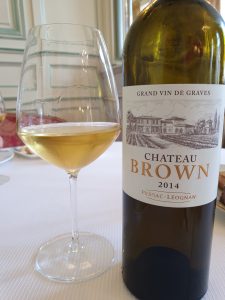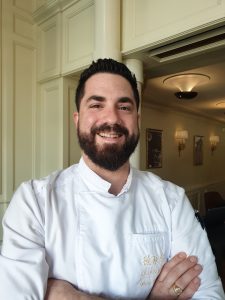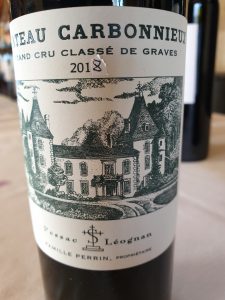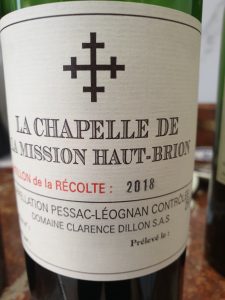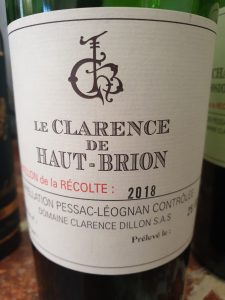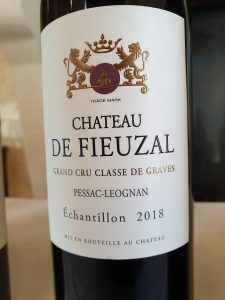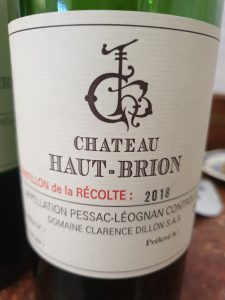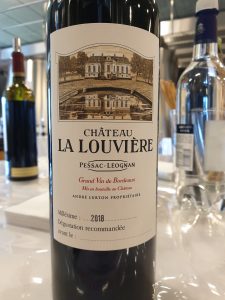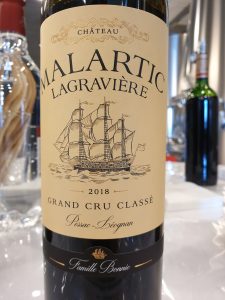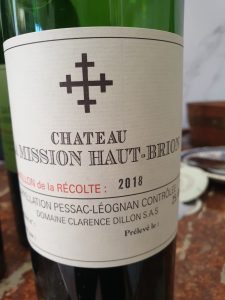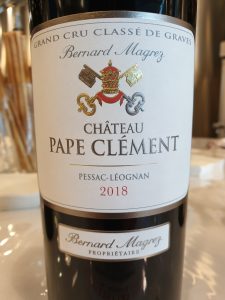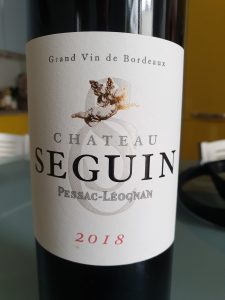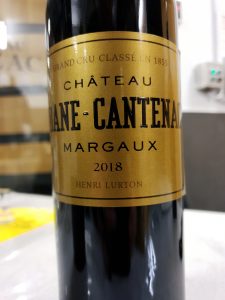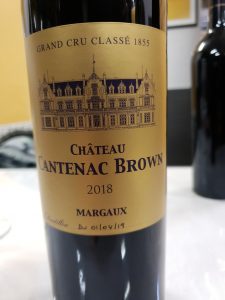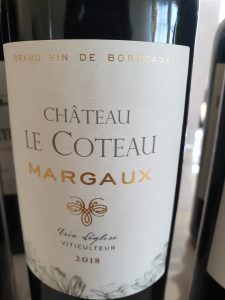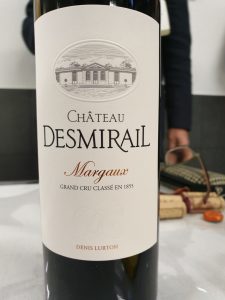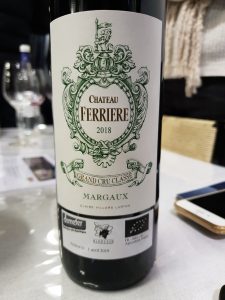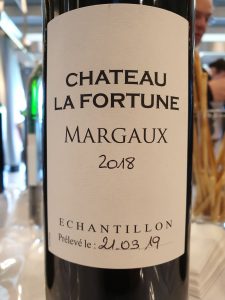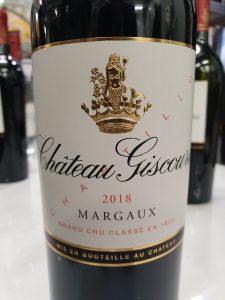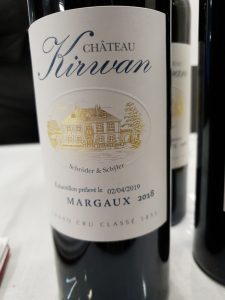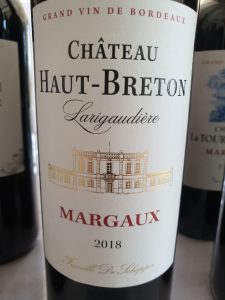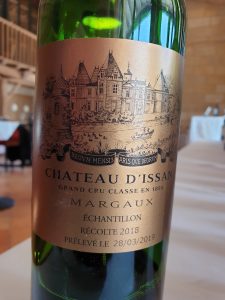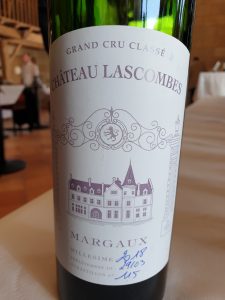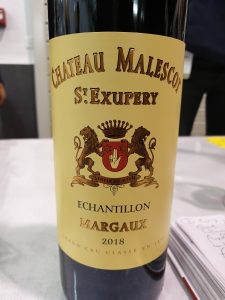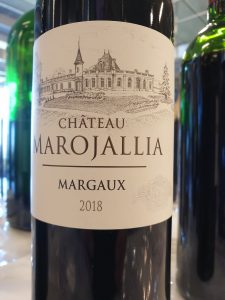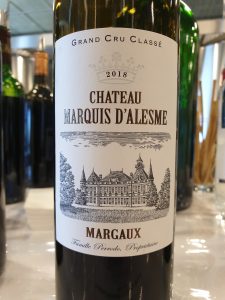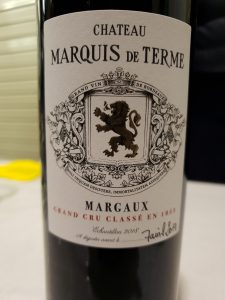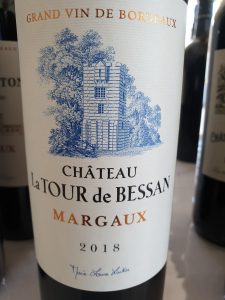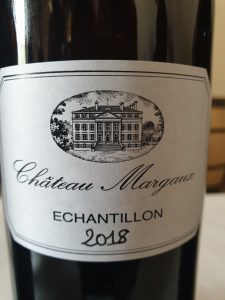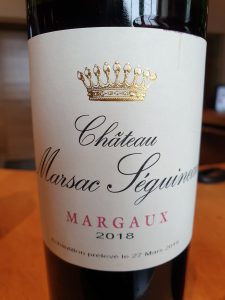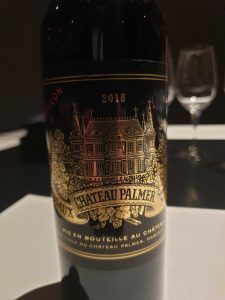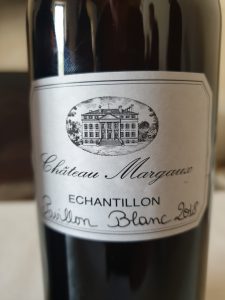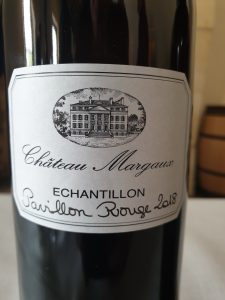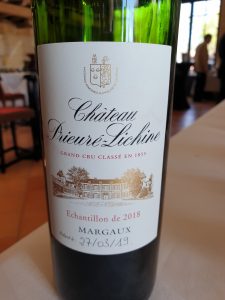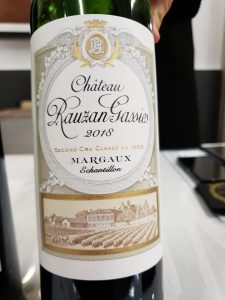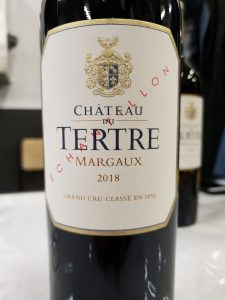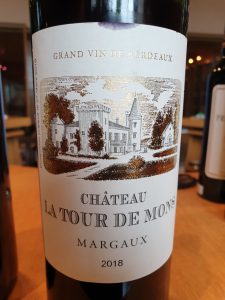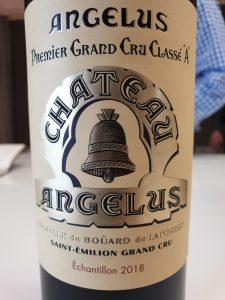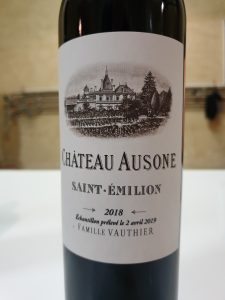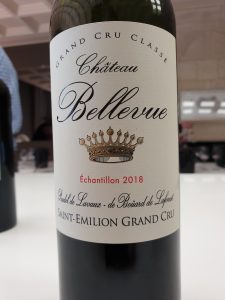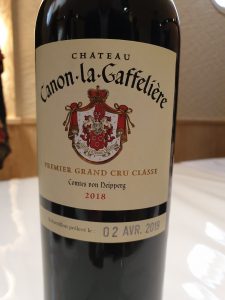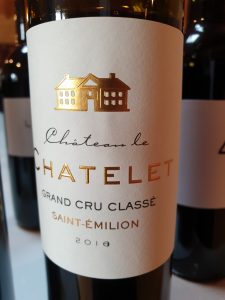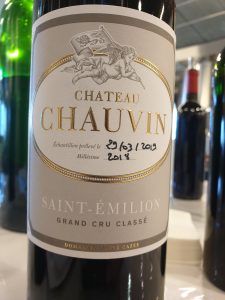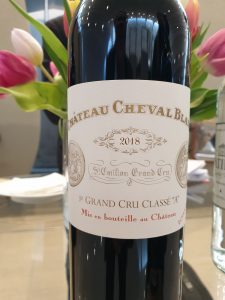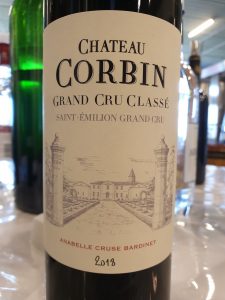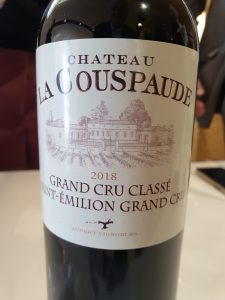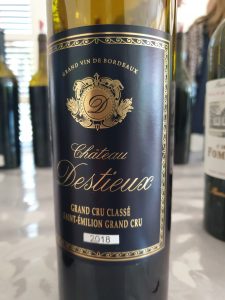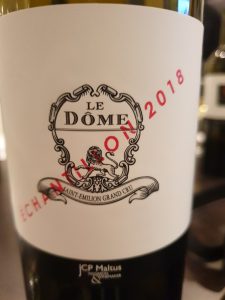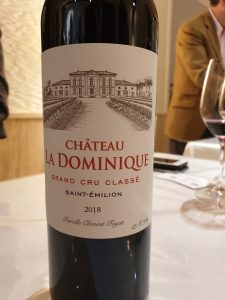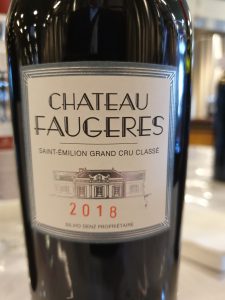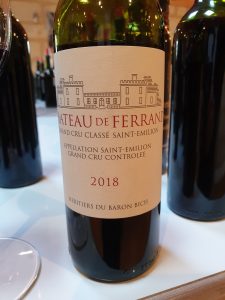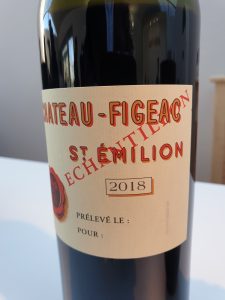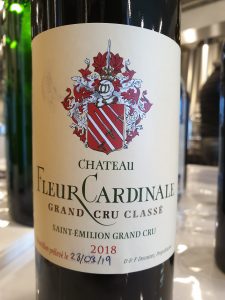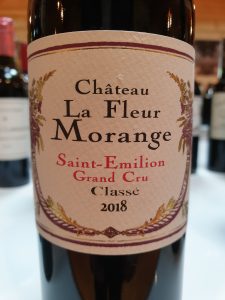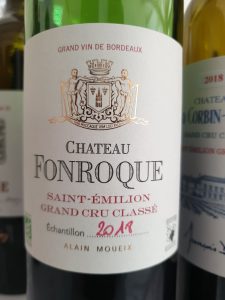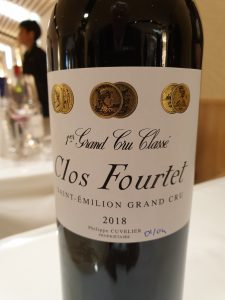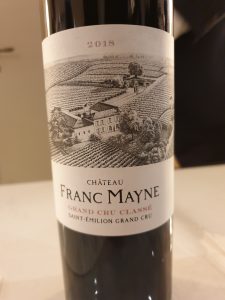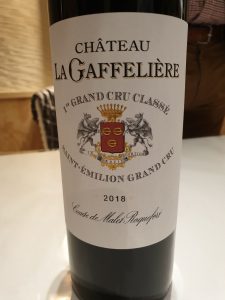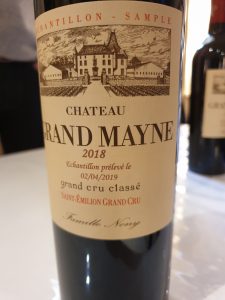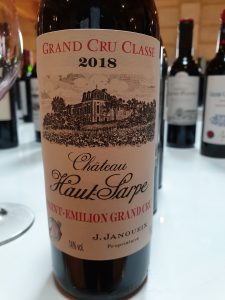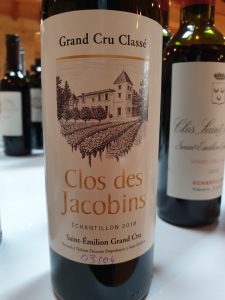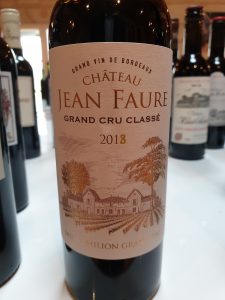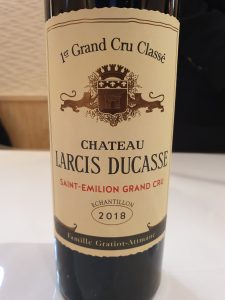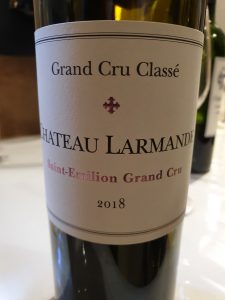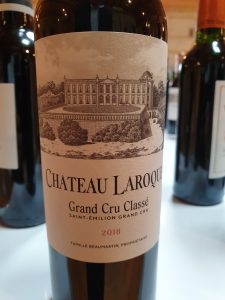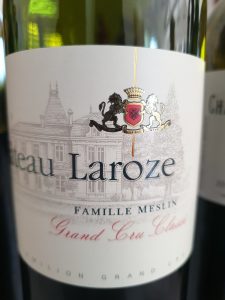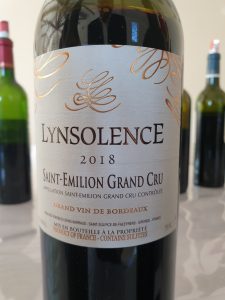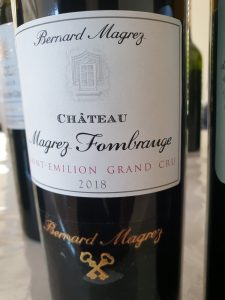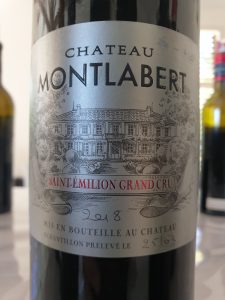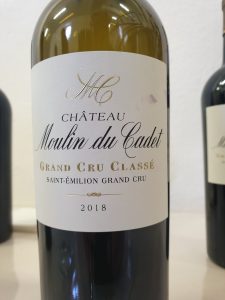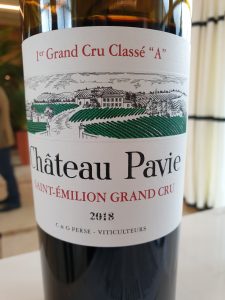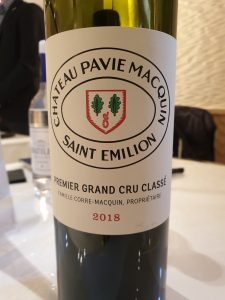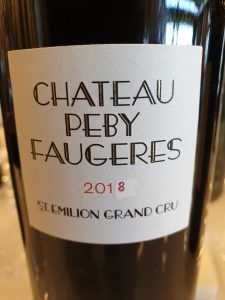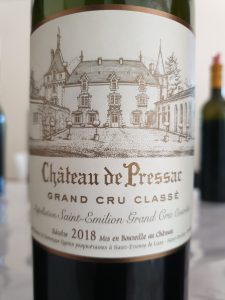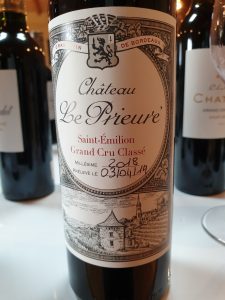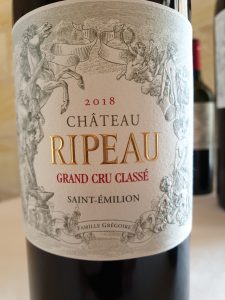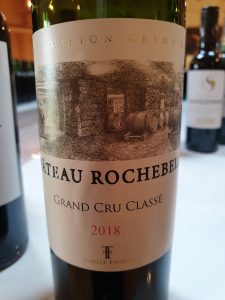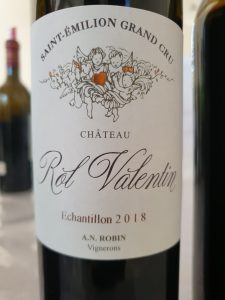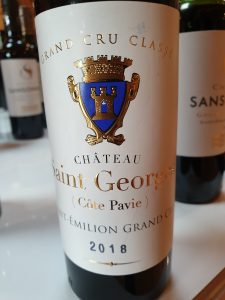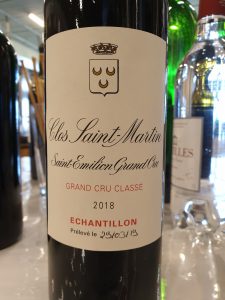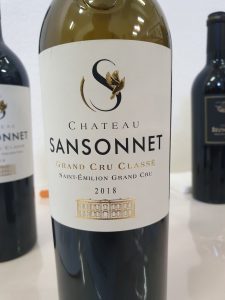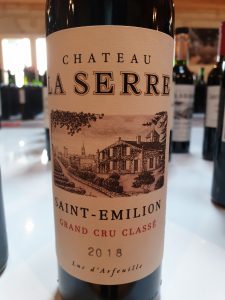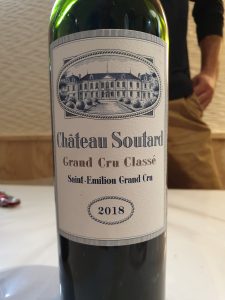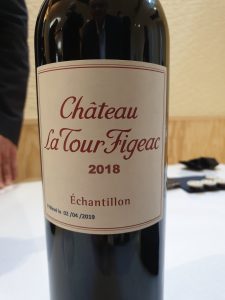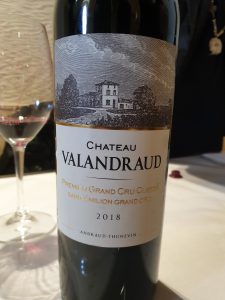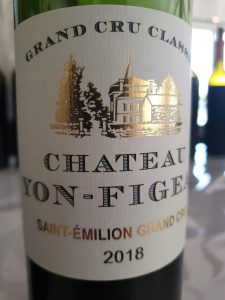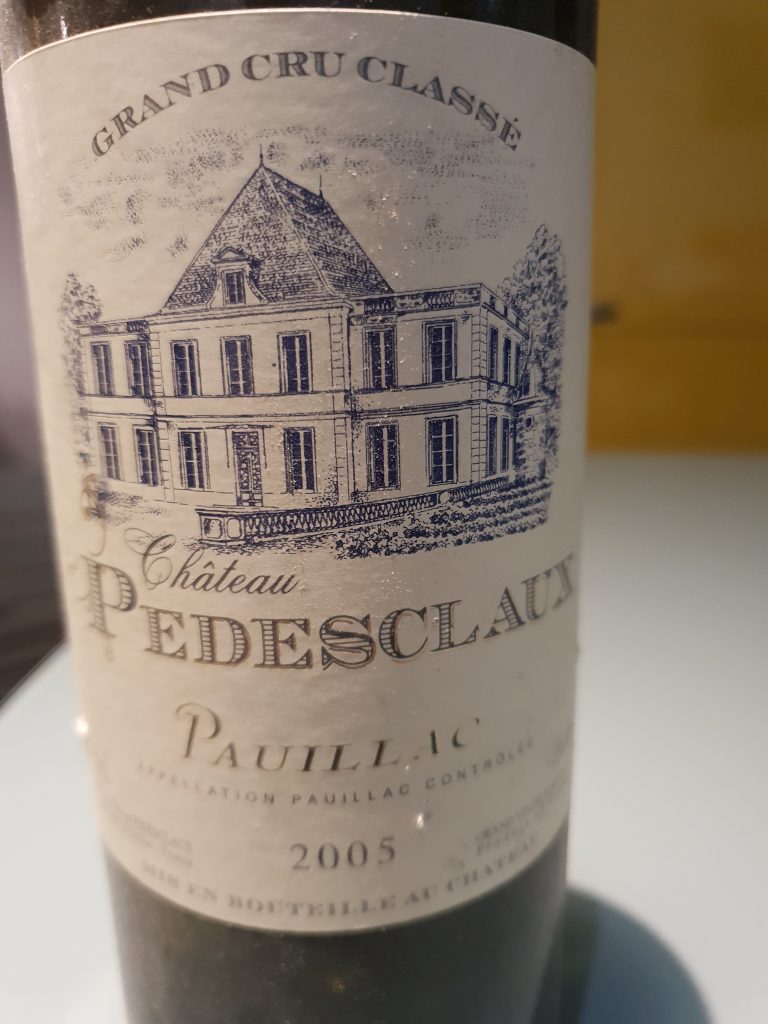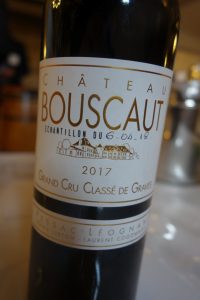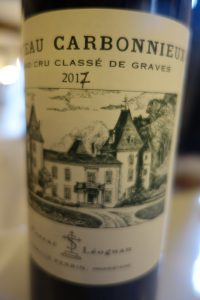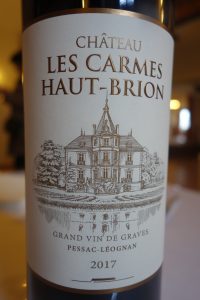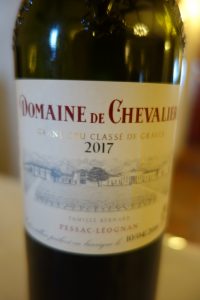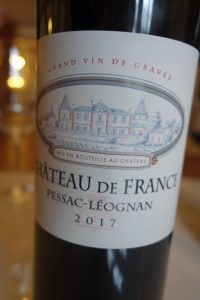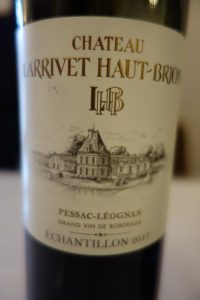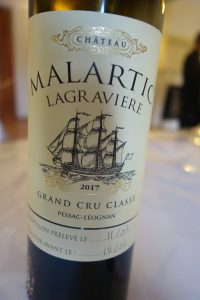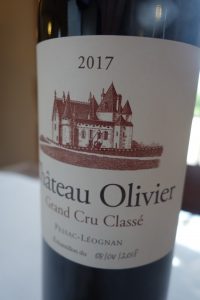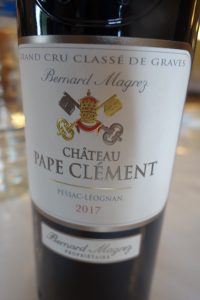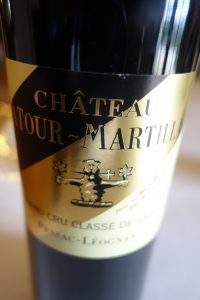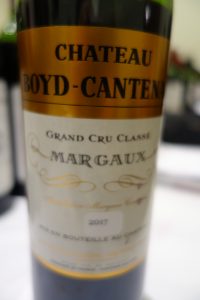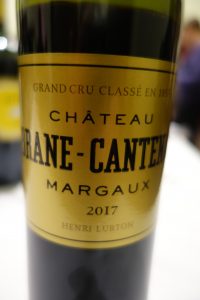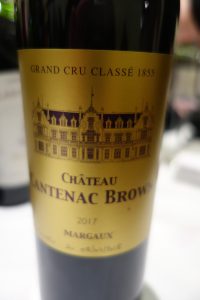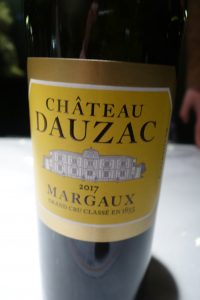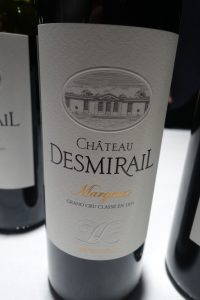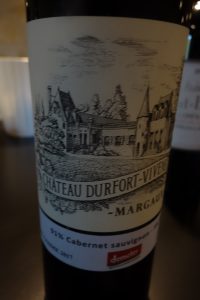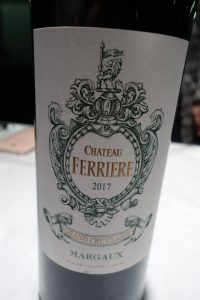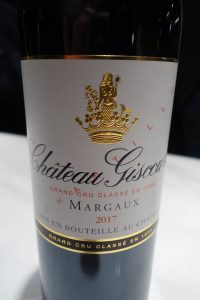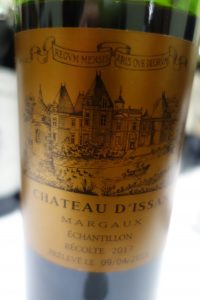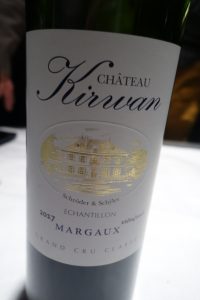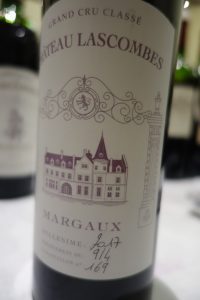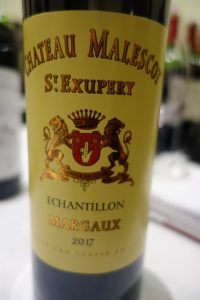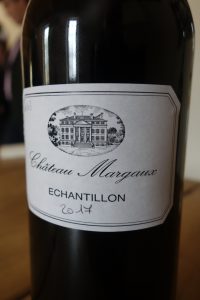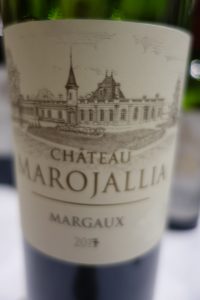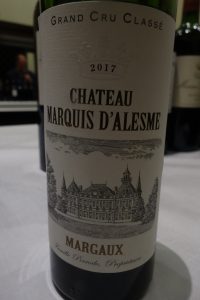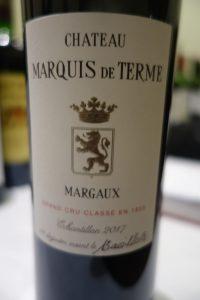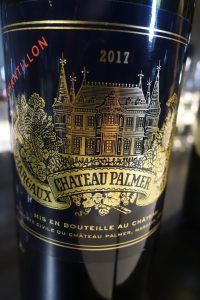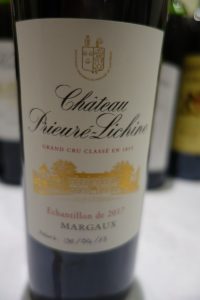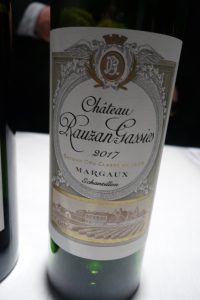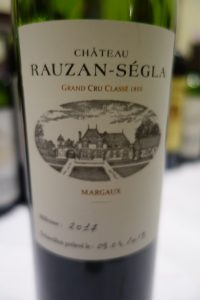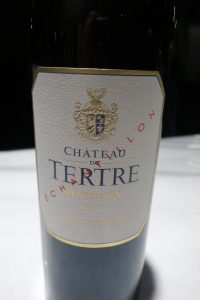Château Angélus
N: Soft, with some spice.
P: Chunky, but silky. It appears at first to be medium rather than heavy-bodied, and then strong oak kicks in on the aftertaste. I mark the wine down for excessive oakiness but, in all fairness, would need to retaste it 10 years from now to see if I have been too severe or not. Good.
Château Ausone
N: Deep, dark, and mysterious.
P: I could invent something here to rise to the occasion and gush about this first growth. However, I will be neither critical nor full of praise. I will state that that 2018 Ausone is playing hide and seek at present and is only a shadow of what it will be one day and is difficult to taste today. It shows great acidity, power, elegance, and restraint. And the texture is wonderful. But this wine is presently hiding its light under a bushel. I will rate its potential as excellent, but in a line-up it I’m sure its reticence would not make it stand out as it should – or as it undoubtedly will in a few years’ time.
Château Beauséjour Bécot
N: Very closed at this time.
P: Much better on the palate. Rich and tight, with good structure and texture. Not overly broad, alcoholic, or overdone. Wonderful long, but slightly dry (at this time) aftertaste. Very good if aromatics develop as they should.
Château Bellevue
N: Pure, slightly spirity, and discreet.
P: Great balance and texture. Moreish. Classic. Good oak. Manages to be both stylish and traditional. Tasted alongside Angélus, I far preferred this. Excellent.
Château Canon La Gaffelière
N: Deep, satisfying, ethereal bouquet with notes of dried cranberry.
P: Seems rich, but paradoxically dilute at first before the fruit is unmasked. Priority has obviously been given to careful winemaking according priority to freshness. The Cabernets (together making about 50% of the blend) come through on the delicate attack and then again with the unbridled fruit. Fine, very long aftertaste. Excellent.
Château Le Châtelet
N: Nice, but rather neutral at this stage. Some coffee/toasted notes, but these are not overly strong.
P: Rich, spicy, and saturates the palate. Very concentrated, yet elegant. A big mouthful with loads of fruit. The aftertaste is strongly marked by oak at present, but indications are that if will integrate. A nice discovery. Excellent.
Château Chauvin
N: A little smoky with good fruit. Deep and interesting.
P: Good volume and mouth feel. Lovely Merlot fruit going into angular minerality on the aftertaste. Finishes a tad dry due to the oak, whose influence should be watched carefully. Good.
Château Cheval Blanc
N: Earthy as much as fruity, but clearly in the very early stages.
P: Gorgeous texture and tremendous fruit. Medium-weight on the palate with a commanding aftertaste worthy of a first growth. Excellent. One of the best wines of the vintage.
Château Corbin
N: Some stewed fruit, cedar, and incense aromas, but rather closed-in at present.
P: More expressive on the palate. Full and rich with a fairly weighty mouth feel, but nevertheless balanced. Big, muscular and sweet. Dark fruit flavors. Terroir-driven and fairly traditional. A fine wine for medium-term ageing. Very good.
Château La Couspaude
N: Toasty oak and a little on the spirity side (blackberry liqueur). One can nevertheless not help but be drawn in to it.
P: Soft on entry, almost to the point of being flabby. Pomerol-like except for the finish, in which the limestone minerality is attenuated. Really soft. Not terribly balanced and the aftertaste is a bit harsh, but it the lingering red fruit is quite attractive. Good to very good.
Château Destieux
N: Smoky with dark fruit, but not very expressive. Have to look for the bouquet at present. Give it time.
P: Definitely brambly with strong (slightly over-extracted?) tannin. Too hard and grippy. Will undoubtedly soften, but enough? Good.
Le Dôme
N: Slight reduction at this stage, but there are elegant truffle and raspberry aromas.
P: Mouthfilling, with a wonderful tannic texture and deep flavors. Very good.
Château la Dominique
N: Inky and ethereal, but not very complex bouquet.
P: Big, with a richness that comes in waves before the finish with hard tannin that does not preclude elegance. Soft framework ending in a certain relentlessness. Unbalanced at this stage, but certainly an ageworthy wine that deserves to be retasted later. Good.
Château Faugères
N: Odd, withdrawn, lurking.
P: Crowd-pleasing up-front fruit followed by slightly artificial tasting oak influence and strong acidity. Out of balance now, but may come together over time. Good.
Château de Ferrand
N: Subtle with notes of incense, white pepper, and underlying fruit.
P: Starts out big and swaggers, only to skip the middle palate to go into an oak-dominated aftertaste that is really dry because of this. Care needs to be taken during the rest of barrel ageing. Good.
Château Figeac
N: Pure, but rather closed.
P: Concentrated and develops beautifully on the palate with good acidity and soft tannin. Great long finish with a desirable sort of firmness that gives the wine ageing potential. The 14° alcohol does not show through. Minerality at the end gives tremendous balance. Very good to excellent.
Château La Fleur Cardinale
N: Subtle cherry-vanilla aromatics I associate with this estate. Enticing, with just the right touch of oak.
P: Big volume and seamless development on the palate with superb tannin. Elegant rather than powerful. The château is going from strength to strength. Long aftertaste with great tannic texture. Excellent.
Château La Fleur Morange
N: Bit reduced and not showing particularly well. Graham cracker overtones.
P: Out of balance and mean at this time. Harsh, rather dry tannin. Too much oak. Needs to be retasted at a later date.
Château Fonroque
N: Old-fashioned in a good way. Unmessed with expression of the terroir. Pure black fruit with some coffee overtones.
P: Plush, oh-so-soft and then the tannin makes itself felt with circumspection and restraint. Big. Some vanilla flavor. Lovely balance and typicity. Very good.
Clos Fourtet
N: Toasty oak along with red and black fruit. Some spice. Understated and subtle.
P: Starts out delicious and sophisticated, neither too big nor too rich, going into a long drawn-out aftertaste with excellent tannin. Not your hulking Saint- Émilion, but certainly not a wishy-washy one! Antithesis of a Parkerized wine. Very good.
Château Franc Mayne
N: Fresh, concentrated, and penetrating, but in a subtle sort of way. Fruity and floral notes emerge with aeration.
P: Fresh and pure, but there is the curious sensation of dilution on entry. However, the wine develops from then on and the aftertaste comes back with a vengeance to show tremendous minerality typical of the limestone plateau. Good to very good.
Château La Gaffelière
N: Fresh chocolate mint aromas as well as good red fruit (strawberry) and slight camphor overtones.
P: Great tannic template that does a sort of somersault from plush cushioned richness into a high-quality fine-grained aftertaste. Will age beautifully. A beautiful performance. Excellent.
Château Grand Mayne
N: Really exuberant blueberry notes, very aromatic.
P: Seems somewhat spirity with strong tannin from both oak and grape skins. Your archetypal big Saint Emilion rather than your refined one. Still, forthright and fruity. Good to very good.
Château Haut Sarpe
N: Little dusty, with pure sweet ethereal red fruit.
P: Very full and compact, but the rich, smooth attack goes immediately into hard tannin without transition. Watch out for the oak influence during further ageing! Potential is there for something very nice. Good to very good.
Clos des Jacobins
N: Lively raspberry aromas and a refined, engaging spirity side.
P: Tight, rich, and – surprisingly – slightly herbaceous with dark fruit. Tannin on the aftertaste may be too much in light of the wine’s intrinsic structure, and seems to come more from oak than skins. Starts out straightforward, but the tannin on the finish is disproportionately harsh. Good.
Château Jean Faure
N: Marked wildberry aromas. Really fresh and powerful. Sensual and strangely reminiscent of Côte Rôtie!
P: Bright natural fruit flavors with great acidity and good tannin too. Medium-heavy mouth feel. Fine linear development on the palate. Teeth-coating, but refined tannin. Strong minerality on finish. A revelation. Excellent.
Château Larcis Ducasse
N: Modern style with sleek new oak and bright fruit in the background along with a powdery (talc) cosmetic component. Clean and impeccable.
P: Melts in the mouth and then fresh acidity checks in even more than the tannin. The assertive oak is a little obtrusive at this time, but let’s give this wine the benefit of the doubt. Excellent.
Château Larmande
N: Upfront, complex, and understated bouquet of black cherry, vanilla, beet juice, and floral elements.
P: Quite soft with flawless follow-through, but lacks depth. Limestone minerality on the long finish for this wine that is more delicate than sister château Soutard. Very good.
Château Laroque
N: Distinguished, classic bouquet. Tremendous sublimated fruit notes with some coffee aromas.
P: Not entirely clean. A gout de terroir whose aromatics are not found on the nose. Massive body, but lacks grace. Tannins in the same mold. Plenty of blackcurrant on the aftertaste. Good to very good (when helped by further ageing).
Château Laroze
N: Layered bouquet of cherry, vanilla, and berry fruit. Suave and not too oaky.
P: The smoothness and seduction on the nose carries over to the palate. Spreads out beautifully with fine-grained tannin. Sensual mouthfeel with structure and length to match. Touch dry on the finish at this stage. Very good.
Lynsolence
N: A medley of various aromas: incense, oak, stewed black fruit, and… soy sauce.
P: Meaty and mouthfilling with a strong tannic profile to go along with the considerable body. Assertive aftertaste with tannin that needs to age for a long time to be resolved. Beefy and a touch dry on the finish, but a pleasurable hearty wine. Good to very good.
Magrez Fombrauge
N: Attractive raspberry aromas. Concentrated, but suave and classy. Not overly oaky as I had feared.
P: Rich, with high-quality resonant tannin. Stops short of showing too much oak on the palate too although this is hardly shy. Obviously a carefully crafted wine. Good tension. Big, yet restrained. A nice surprise. Very good.
Château Montalbert
N: Berry fruit with mocha, strawberry, and forest floor nuances.
P: Good tannic tension from the get-go. Lovely fruit accompanies the development on the palate. Great texture to the tannin and fine ageing potential. Very good.
Château Moulin du Cadet
N: Very ripe with some mint and crushed blackcurrant leaf nuances.
P: Big and strong. I expected it to be a little hollow but, no, it fills out nicely and goes into a fine, fresh aftertaste with good tannin. Concentrated and has a weighty mouth feel. Verging on XXL in style, but avoids overkill. Good to very good.
Château Pavie
N: Rich, concentrated, and resonant, with some violet and emyreumatic overtones.
P: Rich and big, as expected, but not as in-your-face as in previous vintages. Long aftertaste. Let’s be fair here. Good to very good.
Château Pavie Macquin
N: Deep, quite classy, and very attractive bouquet with some prune and polished wood/old library aromas.
P: Great volume and fine velvety texture that does not obviate a certain hardness. In fact, the wine is ultimately soft on the whole, with high-quality tannin bringing up the rear. Despite the slight dip on the middle palate, there is a long, textured, black fruit aftertaste. Very good.
Château Péby Faugères
N: High-class fruit to oak ratio. Obviously well-made.
P: Normally, I don’t like to talk about fruit that “explodes on the palate”, but that pretty much describes this wine. It also features great acidity. Vigorous and assertive, but not top-heavy or aggressive. Quite concentrated. Much better than Faugères. Good to very good.
Château de Pressac
N: Fine, understated bouquet, but needs time to evolve recognizably.
P: Curiously a bit green at first, then shows somewhat aggressive tannin and overwhelming oak. Chunky with a dry finish. Really too early to taste this wine, as is not rare in March after the vintage… Good.
Château Le Prieuré
N: Pure candied black fruit aromas with considerable freshness.
P: Soft and rich going into a tangy aftertaste. Big volume and zippy acidity on the finish. The oak is as it should be. Lovely red fruit flavors. Very good.
Château Ripeau
N: Some reduction so not ideal at this time.
P: Rich chocolate here, but dips on the middle palate. Subsequent flavors then come back with authority, accompanied by tannin which shows the wine will age well. Broad-shouldered and concentrated. Good to very good.
Château Rochebelle
N: Enticing subdued candied black cherry aromas that are sweet, but not obvious.
P: Big mouthfeel. Full-bodied with lovely follow-through going into decided minerality. Very long aftertaste with lovely texture and altogether typical of the best Saint Emilion. Thrist-quenching and well-made. Very good to excellent.
Château Rol Valentin
N: Almost Pinot-like with clove, Viandox, and new leather nuances.
P: Starts out with sheets of flavor and a satiny texture, going into tannin that is a little unyielding. This quality may well last throughout the wine’s life. Good.
Château Saint Georges Côte Pavie
N: Soft, wafting, simple, and rather muted blueberry bouquet.
P: Blueberry flavors on the palate too. Very fluid, fresh, and relatively short, but fine, very mineral aftertaste. Quite representative of its appellation, but lacks punch. Good.
Clos Saint Martin
N: Good Merlot nose. Pure, somewhat peppery, and redolent of Saint-Emilion.
P: Gorgeous mouth feel and texture in keeping with the region’s finest wines. Great minerality on the extremely long aftertaste ultra-representative of the limestone plateau. Medium body and acidity. Very good.
Château Sansonnet
N: Strong, spirity, and a little jammy with some cosmetic overtones. The alcohol is obvious here.
P: Extremely rich, concentrated, and seemingly literally sweet. Big, fat, and strong. Would tire one out if more than a couple of glasses were consumed. The oak is mercifully not too strong. Good.
Château La Serre
N: Pure primary fruit that seems strangely dominated by Cabernet (only 20% of the blend…). Oak complements the fruit beautifully.
P: Big, with a welcome bite to follow the sweet fruit. Strong , with toasty oak and fruit galore. Medium-heavy mouth feel. Somewhat New World in style, but not overwhelming. Great berry finish. Very good.
Château Soutard
N: Nice enough, but rather non-descript.
P: Shorter, seemingly more early-maturing, and altogether less good than sister château, Larmande. Open and easy to drink. Serviceable. Good to very good.
Château La Tour Figeac
N: Soft, but not very expressive. Berry fruit with a floral component.
P: Beautifully smooth, and caresses the palate. Seems to be lacking a little in personality, but then blossoms to reveal enticing flavors and polished tannins. Although a little weak on the aftertaste, this is a very charming wine hard to resist. Very good.
Château Valandraud
N: Sweet uplifting and well-focused red fruit. Precise and natural.
P: No reason to fear too much oak or extraction as in the past. Subtle and fruity above all. A fine wine, not a modern monster. Very soft, going into infinitely long tannic aftertaste. Oak influence is there, but under control. I overcome my prejudices and rate this wine excellent.
Château Villemaurine (label not shown)
N: There’s understated and understated. What is showing at present is faint hints of black fruit jelly.
P: More personality than the nose would lead one to expect. Hearty, but high-quality tannin. Needs to come together. Good.
Château Yon Figeac
N: Full and open with aromas of freshly-pressed grapes, blossoms, and spice.
P: Not quite as positive as the nose. Bit rustic, but honest and very vinous. Long textured aftertaste, with tannins that are not very polished. Good.
